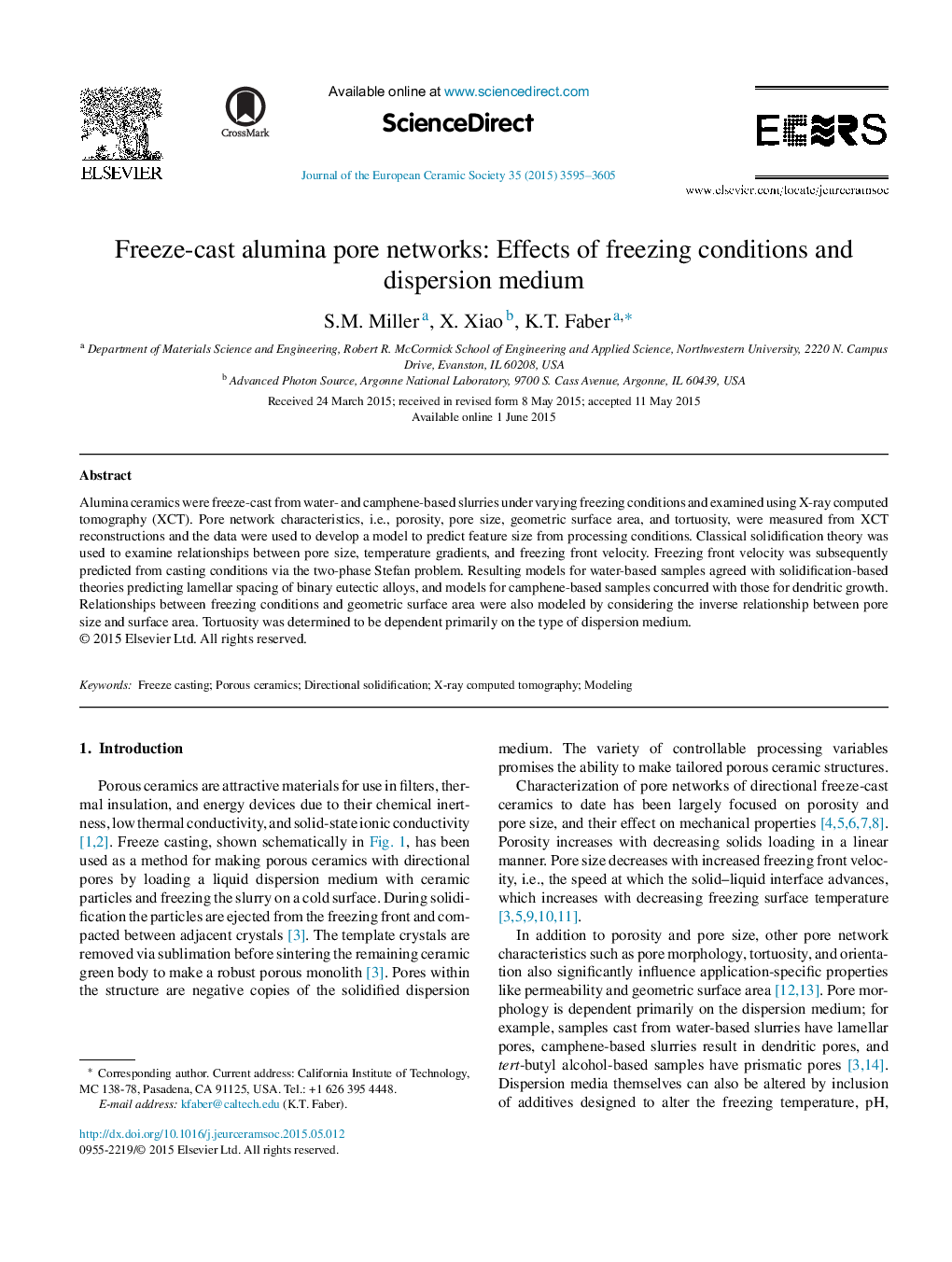| Article ID | Journal | Published Year | Pages | File Type |
|---|---|---|---|---|
| 1473585 | Journal of the European Ceramic Society | 2015 | 11 Pages |
Alumina ceramics were freeze-cast from water- and camphene-based slurries under varying freezing conditions and examined using X-ray computed tomography (XCT). Pore network characteristics, i.e., porosity, pore size, geometric surface area, and tortuosity, were measured from XCT reconstructions and the data were used to develop a model to predict feature size from processing conditions. Classical solidification theory was used to examine relationships between pore size, temperature gradients, and freezing front velocity. Freezing front velocity was subsequently predicted from casting conditions via the two-phase Stefan problem. Resulting models for water-based samples agreed with solidification-based theories predicting lamellar spacing of binary eutectic alloys, and models for camphene-based samples concurred with those for dendritic growth. Relationships between freezing conditions and geometric surface area were also modeled by considering the inverse relationship between pore size and surface area. Tortuosity was determined to be dependent primarily on the type of dispersion medium.
